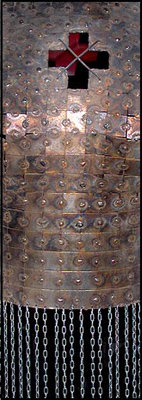Roma Sculptors’ International Project
They were both born and educated in Romania. Petre is currently still living in Romania, but Lacatus left the country in 1990 after his graduation. Lacatus is currently living in Austria, the place where his artistic destiny has been fulfilled.
The exhibition, entitled Roma art, is the first stage of a larger project, initiated by Artisrroma Cultural Association, a Romanian non-governmental organization, founded by a group of Roma artists and art enthusiasts.
The main target of the association is to develop and reinforce the ethnic, linguistic, and cultural identity of Roma people. The association also works to promote education through art and organize exhibitions and art events for both Roma and international artists.
Even if the title of the exhibition (Roma art) shows very clearly the alliance of its authors to an ethnic minority, the art object and its story remain in the foreground.
The first stage of this project was the sculpture exhibition, which opened in Bucharest this summer.
In the future, the association will try to convince Roma artists from Eastern and Central Europe to join together and display their works every year in exhibitions hosted by their countries.
This generous project could contribute to the cultural emancipation of an ethnic group with a long history, full of humility and pain. On the other hand, this project could add precious knowledge about traditional craftsmanship to the artistic contemporary culture.
Sculpture is an expression of both art and craftsmanship. Marian Petre and Mircea Lacatus know this very well, as long as they use the heritage of ironsmith trade in their art works.
In a postmodern context, their sculpture is a bridge that connects contemporary vision and traditional heritage.
This connection explains the reason why the HAR Foundation, the coordinator of the programme “Tradition and Postmodernity,” which unfurled in Romania in 2000, has become involved in the financial sustainment of the Roma art project.
From ancient times, gypsies used to process metals. They made utilitarian, household objects and jewels from iron, bronze, gold, silver or other metals, with the use of fire.
This craftsmanship has its specific secrets, transmitted from one generation to the next. The two Roma sculptors, who own the secrets of this ethnic minority trade, use them in the execution of their works, most of them made fromforged iron or welded steel.
Marian Petre uses metal and carved wood in his figurative sculptures. His favorite subject is the human condition, the humanity, generally speaking, and the humanity of his ethnic group.
A few of his works are entitled “The Trace of Pain” as an allusion to the sufferings of his ancestors.
His sculptures have always a wooden “core” surrounded by a metallic “rack”, made by means of welding. Love, as a divine relation between man and woman is another favorite subject of Petre’s works.
Mircea Lacatus’ impressive sculptures and installations are made only from iron or steel. They are all inspired from the medieval arsenal: bucklers, imperial armors, or thrones.
A few months ago, he had a solo exhibition at a castle in Ebenfurth, Austria. A few monumental sculptures and installations were displayed in this medieval building, creating an exciting dialogue between old and new forms and images.
Lacatus’ involvement in Roma art project makes its continuation possible over the next few years.
Other Roma professional artists from Bulgaria, Serbia, and Russia have already expressed interest in developing similar kind of projects.
The exhibition, opened by Marian Petre and Mircea Lacatus in Bucharest,, is the first step of an ambitious action.
The project has the power to convince us that contemporary art can thrust its roots in common tradition, or in the tradition of an ethnic group, keeping the group’s most important aesthetic features.
The two artists’ approach contributes to the reassessment of the outlook about Roma minorities and their artistic endowment in Romania and all over the world.




